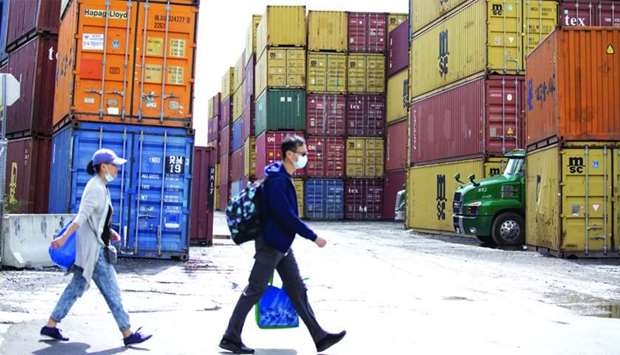Canada's economy shrank at a record annualised pace of 38.7% in the second quarter as a nationwide pandemic lockdown closed businesses and curtailed spending, the government statistical agency said on Friday.
Declines were recorded across the board including in consumer spending, business investment, trade and tourism — in line with analyst forecasts, following an 8.2% contraction of Canada's gross domestic product (GDP) in the first quarter.
But there was also a bright spot in the data: the final month of the quarter saw an uptick, with June GDP rising 6.5%, and preliminary data for July suggesting the worst is over.
"It was a quarter to forget for Canada's economy," commented CIBC analyst Royce Mendes in a research note.
He noted, however, that Canadians' disposable incomes actually grew in the period as emergency government support more than offset a drag from a jump in unemployment.
That drove the household savings rate up to 28%, from 7%, "potentially leaving some extra cash for spending in upcoming periods," Mendes said.
According to Statistics Canada, household spending fell 13.1% due to substantial job losses and few opportunities to spend as most stores and restaurants were closed and travel and tourism was restricted by the closure of the border.
Amid uncertainty at the height of the Covid-19 global outbreak, business investment was down 16.2% as construction activities slowed, plants closed, and oil prices slumped.
Export and import volumes fell sharply (-18.4% and -22.6%, respectively) as trading partners' economies also shrank owing to their own measures to combat Covid-19 outbreaks.
Faced with lower imports and supply chain disruptions, businesses drew down inventories.
Lower exports of motor vehicles and parts, industrial machinery and equipment, aircraft and aircraft engines, intermediate metal products, travel services, and transportation services were slightly moderated by increased exports of farm and fishing products, nuclear fuel, and pharmaceutical and medicinal products.
Declines in import volumes, led by motor vehicles and parts, aircraft and aircraft engines, crude oil and crude bitumen, industrial machinery and equipment, travel services and transportation services, meanwhile, were partly offset by increases in imports of metal ores and concentrates, and intermediate metal products.
Businesses curtailed investments in engineering structures and non-residential buildings, research and development, mineral exploration and software, as well as transportation.
Consumers, meanwhile, purchased fewer new and used passenger cars and trucks, "reflecting closures of car dealerships, income uncertainty, and reduced transportation needs as working remotely became more widespread for some professions," Statistics Canada said.
Purchases of garments, clothing materials and footwear, food, beverage, and accommodation services, and transportation services were also down.
Home ownership transfer costs, renovations and new constructions also fell.



